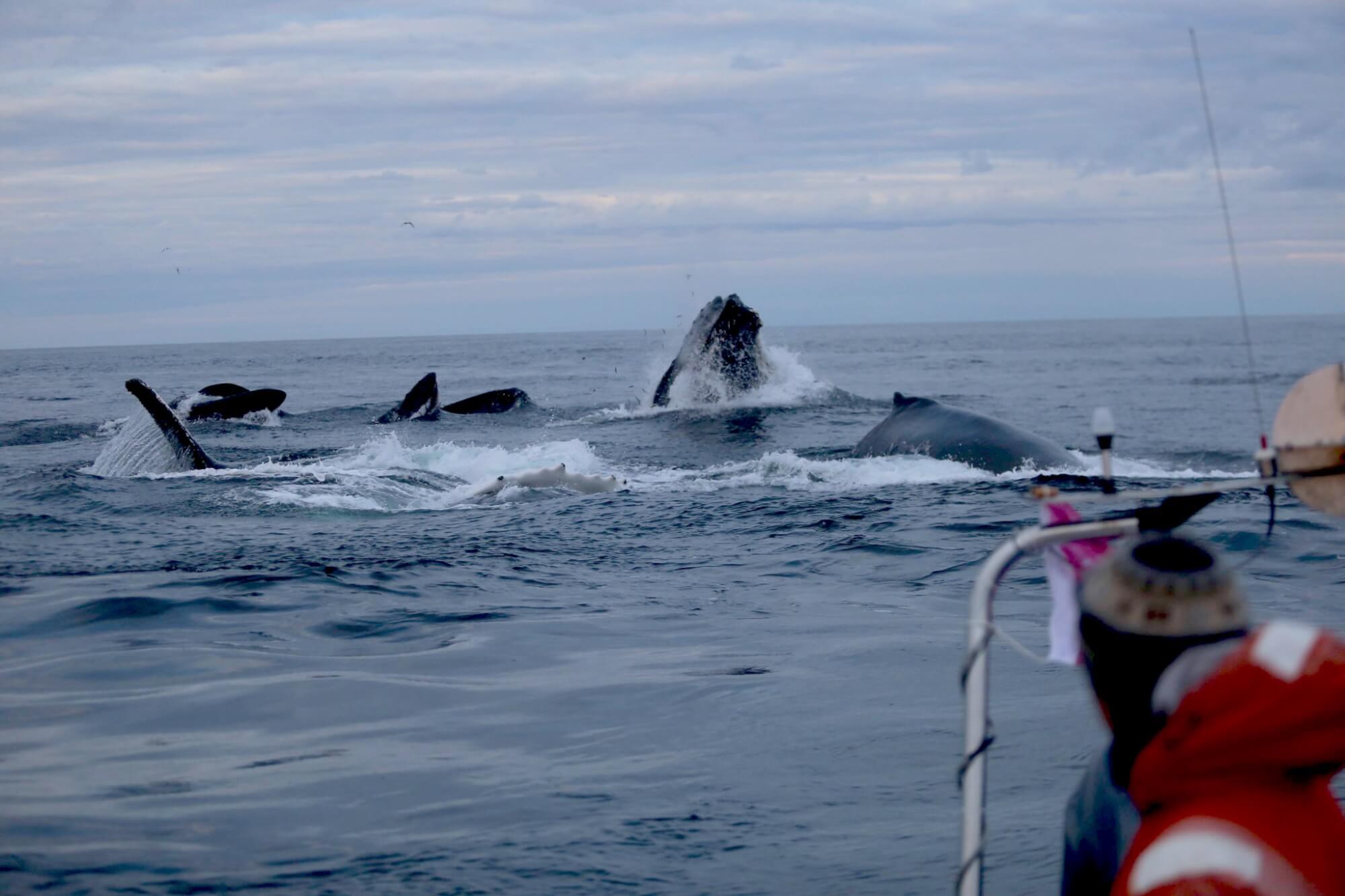Does this photo show five whales or six? Their gaping mouths are about to clamp down on masses of quivering capelin. We observe these fish jumping into the air in the vain hope of surviving this feast. Not far away, seabirds make short work of the capelin stunned by the movements of the giants. Taken on June 25 in the western part of the Jacques-Cartier Strait, north of Anticosti Island, this photo of humpback whales exemplifies the rich biodiversity observed by the Mingan Island Cetacean Study team. On this one day, researcher Christian Ramp was able to tally 30 fin whales, 15 humpback whales, 20 minke whales and a hundred or so harp seals. Such a gathering of species in the same area is testament to an impressive concentration of prey!
“I would not want to be a capelin when the gannets begin feasting on the schools,” writes one naturalist who frequents the Percé, Bonaventure Island and Percé Rock region. Aboard the cruise ship where she works, she is able to follow the movements of large schools of capelin thanks to the hundreds of gannets that dive-bomb them at full tilt. On June 21, some gannets are so stuffed that they must regurgitate part of their meal (sometimes 5 to 10 capelin!) before they can take wing. This same day, beyond the Baie des Marigots, two humpback whales slap their tails on the water surface, once, twice… six times! Through the clear water, one can make out the white pectoral fins extending outward like the arms of a cross on each side of the humpbacks’ corpulent bodies. Two days later, the first two fin whales of the season in this sector are spotted.
In Percé, schools of capelin are visible from the end of the pier; many of these fish bear marks left by all the predators that attempted to make a meal of them or by the repeated mating of males. Common murres, razorbills and kittiwakes are also trying to get their bills on this calorie-rich snack.
Back in the Estuary – in Franquelin to be exact – our observer is pleased to note the presence of at least two species every day this week. Porpoises, minke whales, fin whales and seals are observed offshore. On June 26, she notice three fin whales swimming side by side. The trio of individuals are making the return trip together to Baie-Comeau.
In Tadoussac, belugas and minke whales entertain the staff at the Marine Mammal Interpretation Centre, whose large windows overlook the Saguenay Fjord. Two fin whales are identified in the Saguenay-St. Lawrence Marine Park area, namely Bp955 (a.k.a. “Ti-Croche”) and Bp918.
Click on the whale or the seal icon to find out more about the corresponding observation (specie, number of individuals, info, pictures). To enlarge the map, click on the top right corner icon.
To see the list of the observations, click on the top left corner.
This map represents an order of magnitude rather than a comprehensive survey.
Legend for the whales
Light grey: Beluga
Dark grey: Fin Whale
Black: Minke Whale
Light blue: Humpback Whale
Legend for the dolphins
Brown: Harbour Porpoise
Legend for the seals
Grey: Grey Seal
Brown: Harp Seal
Kaki: Harbour Seal





